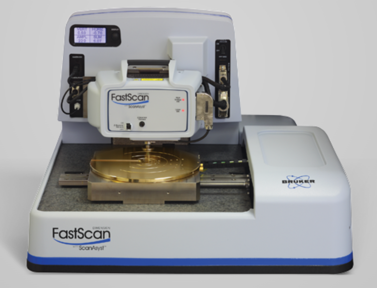
CINT has multiple Atomic Force Microscopy (AFM) systems that can be leveraged to perform
a variety of sample imaging modalities.
AFM systems available to CINT users:
- Bruker Dimension Icon.
- Bruker Dimension FastScan.
- Neaspec IR-neascope+fs.
- Nanosurf Drive.
General Capabilities include:
- General Atomic Force Microscopy — topography and phase imaging.
- Nano-particle identification.
- 4hz high quality topography scans with FastScan.
- Surface roughness characterization.
The Bruker Dimension Icon Scanning Probe Microscope supports many advanced imaging features, including:
- PeakForce® Quantitative nanomechanical mapping, with high-resolution high-stiffness upgrade.
- Electrostatic Force Sensing modalities:
- Electro-static Force Microscopy (EFM).
- Kelvin Force Mircroscopy (KPFM).
- Piezoresponse Force Microscopy (PFM).
- Scanning current-voltage microscopy.
- Scanning Capacitance Microscopy (SCM).
- Electrochemical scanned probe microscopy.
- Low-force nanoindentation.
- Scanning Tunneling Microscopy (STM).
- Conductive/Photoconductive AFM — Peakforce Tunneling current AFM (PeakForce TUNA) with bottom illumination.
- Magnetic Force Microscopy (MFM).
- Magneto-conductive atomic force microscopy (mc-AFM).
The Neaspec IR-neascope+fs supports the measurement of optical properties of surfaces using scattering-scanning near-field optical microscopy (s-SNOM). These include:
- Nano-Vis — Mapping of the near-field optical response of surfaces in the visible spectral range.
- Nano-IR — Resolution of the optical response of material surfaces in the Mid-IR spectral range using continuous wave illumination from a tunable Quantum Cascade Laser.
- Nano-FTIR — Allows for nanoscale chemical identification by combining s-SNOM with FTIR.
- Femtosecond s-SNOM: Studies dynamic processes in nanomaterials by combining pump-probe spectroscopy with nano-FTIR.
Contacts:
Andy Jones
Dan Hooks
Brad Boyce
Kevin Garber
